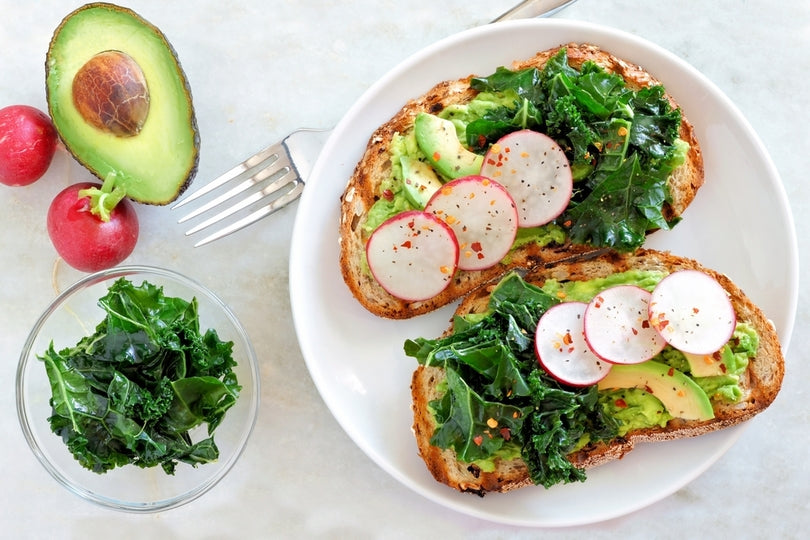How To Track Your Fitness Progress


One question that I get asked ALL the time is "what is the best way to track my fitness progress?"
While many women in the #SweatwithKayla Community (formerly the BBG Community) track progress is by taking transformation pictures, I believe that the best fitness progress measurements relate to how you feel. Choose a measurement that is relevant to your goals and the reasons for starting your fitness journey.
One reason to track your progress is that it can help you to stay motivated. As you work towards becoming fitter, it can be easy to feel discouraged because you haven’t reached your goals yet.
Jump to:
- Best ways to track fitness
- Record how you feel
- Take progress photos
- Measure your body
- Notice how your clothes fit
- Have a health check
- Track your hydration
- Plan and record your meals
- Record your workouts
- VO2 max and resting heart rate
- Test your strength
- Fitness measurements to avoid
Keeping a record of how far you have come can help you see that you ARE making progress.
Even slow progress is still progress! When you can see even small improvements in your performance and how you feel, it can be rewarding.
When you want to make a change, the best way to begin is by recording your starting point! Once you have a baseline, it's easier to notice improvements and to adjust your routine, so you can achieve your goals.
Best ways to track fitness
Here are some of the best ways to measure your fitness progress.
Record how you feel
Keeping a journal can help you to reflect on your progress. One of the most significant benefits of being fitter and healthier is that you feel good!
Some things you might record could be your energy levels, overall mood, and quality of sleep. You might also note if exercises that you previously found very challenging, start to become easier!
Some days you might feel sluggish or bloated — other days you will feel full of energy and light on your feet.
Be aware of this and don't be discouraged if you have a day when you don't feel as good.
Exercise releases endorphins, which can improve your mood and wellbeing — check in with yourself after you exercise to see if you're feeling better.
I bet that you will! Use this journal entry as motivation to follow through with your workout plan, even on the days when you don't feel motivated.
Take progress photos
Transformation photos are one way that you can see how your body changes over time.
Take photos from the front, back and side. For a more accurate comparison, try to wear the same clothing each time.
Try to take the photos at the same time of day, in the same lighting conditions. Daily weight can fluctuate up to a couple of kilos everyday depending on your food and water intake, exercise completed, and how you have slept. Plus even a small change in lighting can make a difference in the appearance of your body!
Taking a photo before you start and comparing it to a new photo, week to week or month to month, can show you changes in your body composition and your confidence!
Measure your body
Muscle weighs more than fat, so taking measurements of your body can show you even the smallest changes to your body composition.
Even if your weight doesn't change, you may notice that your waist, hips or other body parts do.
Measurements are helpful for more than just tracking your weight loss goal. Measuring your body can help you to identify imbalances, strengths and weaknesses.
Be guided by the fit of your clothes
Many women have clothes that they'd like to fit into or fill out better. The fit and feel of your clothing can be a guide to the changes that you might not spot by looking in the mirror.
This test has to be realistic! Pick a pair of jeans you love and use the fit to measure your progress every month or so.
Have a health check
If one of the reasons you started your fitness journey is to improve your overall health, a check-up with your doctor can show how you've progressed.
Exercise has so many health benefits. It may reduce the risk of chronic disease, lessen your chance of becoming overweight, improves and maintains your cardiovascular fitness, is great for pain management, can help you live longer and improve overall wellbeing.
Track your hydration
Being well hydrated is so essential for success in your workouts! You need water to perform well during training and feel your best throughout the day.
You can record the water you drink each day in the Sweat app. Just select the trophy icon at the top right of the screen to record your water intake.
When you reach the goal of drinking two litres, you'll get a trophy! You can share this on social media, in a message to your accountability partner, or save the image to your phone’s camera roll to track your progress.

Plan and record your meals
Planning your meals and snacks ahead of time can help make healthy choices readily available!
Meal prep for beginners doesn't have to be complicated — you can make it suit your preferences and lifestyle.
When you plan meals, it's also easier to track what you are eating. Tracking your food for a week or two can help you identify where you can make healthy food swaps.
Fuelling your body with the nutrients it needs will help you to reach your fitness goals faster.
Record your workouts
You can use the workout planner in the Sweat app to record your workouts — you can use the suggested workout plan for your program, which will show up in your planner, and you can add in any additional workouts you do so they're recorded. You might add some details about which parts of your body you worked, and how long you spent working out.
If you use the Sweat app to guide your workout, it will automatically record your session when you finish. I would recommend including any additional recovery sessions too, as these are essential for building fitness! As you see your consistency increasing over time, you will be motivated not to break the chain.
You can also connect your device to your phone’s health app to include your daily step count.
VO2 max and resting heart rate
If you use a fitness tracker that monitors your heart rate, noting down your resting heart rate can give you an idea of your level of fitness.
A lower resting heart rate usually indicates that your heart is functioning efficiently — an indication of cardiovascular fitness.
Your heart is a muscle, and just like the skeletal muscles that you train when you workout, it gets stronger with training.
As your heart becomes stronger, it won't have to work as hard to pump blood around your body, and your heart rate will decrease.
The best time of day to check your heart rate is first thing in the morning, right after you wake up and before you get out of bed. During the day, your heart rate is affected by factors like your activity level, body position, emotional state, caffeine intake and hydration.
Some fitness devices will also measure your VO2 max. This number indicates the maximum amount of oxygen that your body can use during intense exercise.
A high VO2 max means that you are aerobically fit. Keep in mind that most devices provide you with a rough estimate that gives you an idea of your overall fitness.
As with every measure of fitness, don't be concerned with daily fluctuations. It's the trend over time that will show improved fitness.

Test your strength
Focusing on what you can do is a great way to measure your fitness! When you first start a workout program like High Intensity with Kayla Itsines (formerly BBG), you might not be able to do a full push-up.
After six weeks of High Intensity with Kayla, you may find that you can do more knee push-ups than you could at the start. You might even be able to do a few pushups on your toes!
To test this, pick an exercise challenge that you want to improve on and work at it over time.
Some ideas:
- How many push-ups can you do in one minute?
- How long can you hold a plank?
- How many burpees can you do in one minute?
Unreliable fitness measurements
It can be easy to fall into these traps that make it feel like you aren't making progress. Avoid these fitness tracking mistakes and focus on the bigger picture.
Weighing yourself
Your body has many mechanisms for keeping your weight stable, so it can be hard to shift the number on the scales.
Weighing yourself can be an inaccurate way to measure your actual progress, even if you have a weight loss goal.
The number on the scales doesn't reflect the changes to your body composition.
To further complicate this measurement, as a woman, your weight can naturally fluctuate by 1-5 kg in a day.
If you are going to track your weight, weigh yourself no more than once a week — in fact, I would recommend once every four weeks! Make sure you are wearing the same clothing and use the same scales
Daily measurements
No matter which fitness measurement you decide to use, don't record your progress every day!
Building fitness takes time and fluctuations in your measurements and mood each day may make you feel like you are going backwards — but you aren't!
I want all women using my programs to focus on how you feel over time, rather than how you feel day by day.
I bet when you look at it that way, and you are consistent, you WILL notice changes over time.
Relying on one type of measurement
Our bodies are continually changing in response to changes in our hormones, what we've eaten, how well we've slept, and so many other factors.
Tracking any one fitness measurement may lead to an incomplete picture of your real progress.
I recommend that you use two or three of the above methods to track your fitness over several months or longer.
Doing this will give you a better feel for how your body and mood have changed in response to a regular exercise routine.
Celebrate your fitness progress and embrace the journey!
The real progress that I want the women to experience is to FEEL more confident.
When you exercise regularly, you tune in to your body and become more aware of how you feel physically AND mentally. Tracking your progress can help to make exercise more enjoyable so you can reap the benefits!
This can motivate you to keep going with your healthy lifestyle.
How do you track your fitness progress? Let me know in the comments below!
* Disclaimer: This blog post is not intended to replace the advice of a medical professional. The above information should not be used to diagnose, treat, or prevent any disease or medical condition. Please consult your doctor before making any changes to your diet, sleep methods, daily activity, or fitness routine. Sweat assumes no responsibility for any personal injury or damage sustained by any recommendations, opinions, or advice given in this article.




<#= c.user.username #><#= moment(c.created_at * 1000).fromNow() #>
<#= c.html_body #> <# if (c.images) { #>
<# } #>